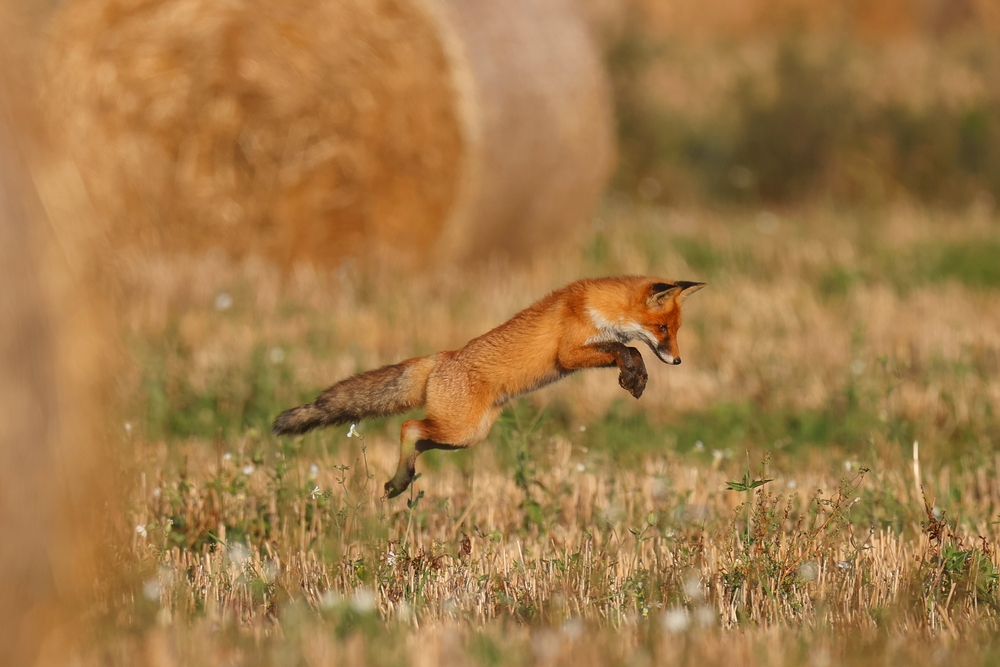The 5 Senses Animals Have That Humans Don’t
Posted on Categories Discover Magazine

Humans have sophisticated senses that have been well-developed over time. We have an excellent sense of sight — thanks to retinal photoreceptors (rods and cones). We also have a strong sense of hearing that ranges between 20 to 20,000 hertz.
Along with that, we have a robust sense of smell that helps us detect dangers such as fire and if food has gone bad. While we have sharpened senses, there are many animals that surpass us. In fact, animals possess some impressive senses that people don’t have. Let’s look at five of them.
1. Echolocation
Echolocation is a remarkable ability found in certain animals that allows them to locate objects using sound waves for various purposes.
What Is Echolocation?
It’s also sometimes referred to biological sonar because echolocation locates objects through the use of reflected sound in the form of high-frequency sound waves. It’s used to find prey, avoid predators and obstacles, and for social interaction.
(Credit:Rudmer Zwerver/Shutterstock)
What Animals Use Echolocation?
Animals that use echolocation include bats, dolphins, whales, some shrews and mice. While bats’ echolocation range is under 30 feet, it’s highly effective at helping them navigate in dense environments.
Dolphins have a much wider echolocation span that exceeds 300 feet. As an incredibly accurate sense, animals can identify an object within inches. Dolphins can even determine the difference between a ping-pong ball and a golf ball — based on density.
Read More: Bat Faces Are Vast and Varied
2. Electroreception
Electroreception allows some animals to detect electrostatic fields to hunt in conditions where relying on sight is not practical.
What Is Electroreception?
Nerve and muscle activity create electric fields, which allow other animals to locate prey in circumstances where they cannot rely on sight. Such conditions happen where potential food sources are in caves or dark/murky water.
(Credit:Alessandro De Maddalena/Shutterstock)
What Animals Have Electroreception?
Electroreception is found primarily in amphibious or aquatic animals, as opposed to terrestrial animals — since water is a better electricity conductor than air. In the water, sharks, dolphins, rays and certain bony fish have electroreception. There are exceptions, though, including the platypus, roaches and bees, which can detect the electronic field surrounding flowers.
Read More: What Can Shark Brains Tell Us About Their Fascinating Intelligence and Behaviors?
3. Infrared Vision
Infrared vision was first discovered in 1800 by German-born astronomer William Herschel — it was an accidental discovery that occurred when Herschel was trying to figure out a way to reduce the sun’s glare when looking through a telescope.
What Is Infrared Vision?
Infrared vision is the ability of certain animals to perceive infrared light, also known as infrared radiation (IL), a type of radiant energy. Invisible to the human eye, it can be felt as heat by certain animals.
(Credit: jiade/Shutterstock)
What Animals Can See Infrared Light?
Only cold-blooded animals can see infrared light, whereas warm-blooded animals release heat, preventing them from seeing it. The animals with infrared vision include mosquitos, bedbugs, goldfish, salmon, bullfrogs and some snakes.
Read More: Yes, Snakes Can Hear Sound
4. Magnetoreception
Some animals have the ability to to use magnetoreception for navigation and other purposes.
(Credit:PhotosbyAndy/Shutterstock)
What Is Magnetoreception?
Magnetoreception is a biological phenomenon in which certain animals can detect and use Earth’s magnetic field for reasons such as orientation. It is like a built-in GPS — a navigation tool used for several purposes.
What Animals Use Magnetoreception?
Animals that have magnreception include red foxes, cows, deer, butterlfies, fruit flies, some birds, lobsters and sea turtles.
For animals like the red fox, researchers believe that foxes can “see” Earth’s magnetic field. This appears as a patch in their vision. They use magnetoreception to help catch prey hidden beneath snow or grass by lining up their pounces with Earth’s magnetic field.
If you look at a herd of cows or deer, you’ll notice them (almost always) facing the same way — toward Earth’s magnetic poles. Whether for grazing or resting, it’s a north-south magnetic alignment. Experts believe it helps them map and familiarize themselves with their surroundings.
For the monarch butterfly, fruit fly, pigeon, lobster and sea turtle, it helps them navigate lengthy migrations. One theory to explain this is a symbiotic relationship between magnetotactic bacteria and the animals they live within.
Read More: How the Smallest Butterfly in North America Travels Using Gusts of Wind
5. Polarized Light Vision
Polarized light vision is a sensory adaptation that enables some animals to detect hidden patterns and gain advantages in tasks like hunting, navigation and communication.
(Credit:Nantawat Chotsuwan/Shutterstock)
What Is Polarized Light Vision?
While humans need sunglasses to block glare, some animals’ photoreceptors evolved over time to do this naturally — providing them with an extra dimension of vision. Polarized light waves have vibrations that occur in a single plane and travel vertically and horizontally. This light is reflected in water, leaves, glass and other shiny surfaces.
Animals use polarized vision for locating food sources, communicating with other animals, navigation and detecting camouflage.
What Animals Can Detect Polarized Light?
Animals that can see or detect polarized light include honey bees, ants, crickets, cephalopods, the greater mouse-eared bat, the mantis shrimp and certain fish. Cuttlefish have the best polarized vision in the animal world. So, although cuttlefish are colorblind, they have a hunting and survival advantage.
Read More: 4 Hidden Ways Animals Camouflage Themselves